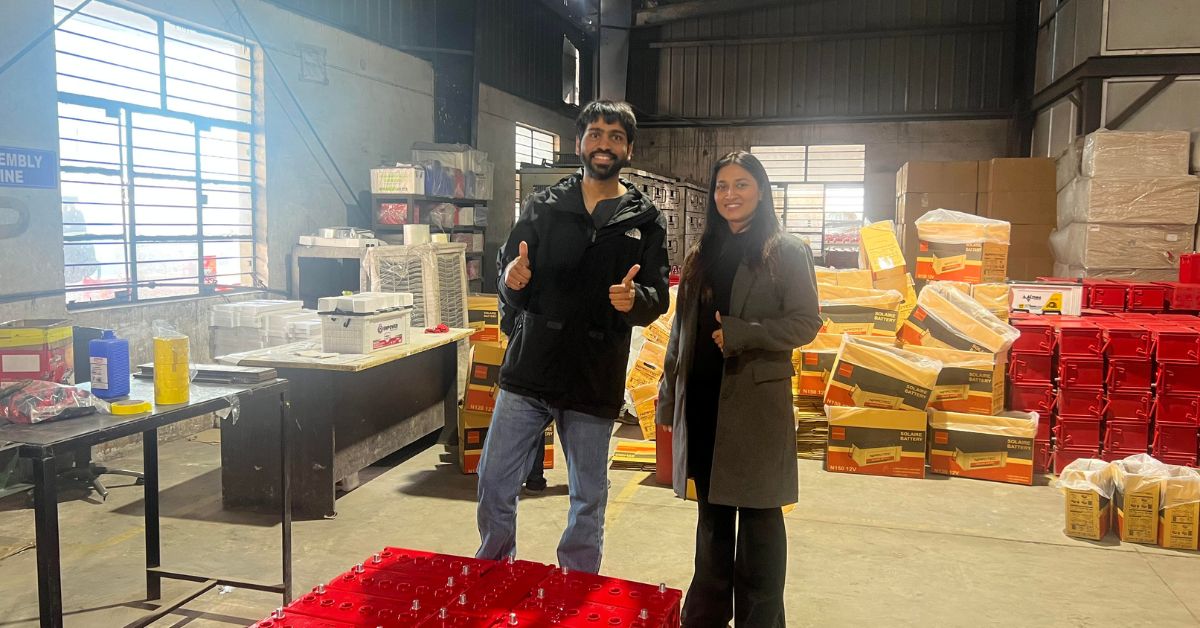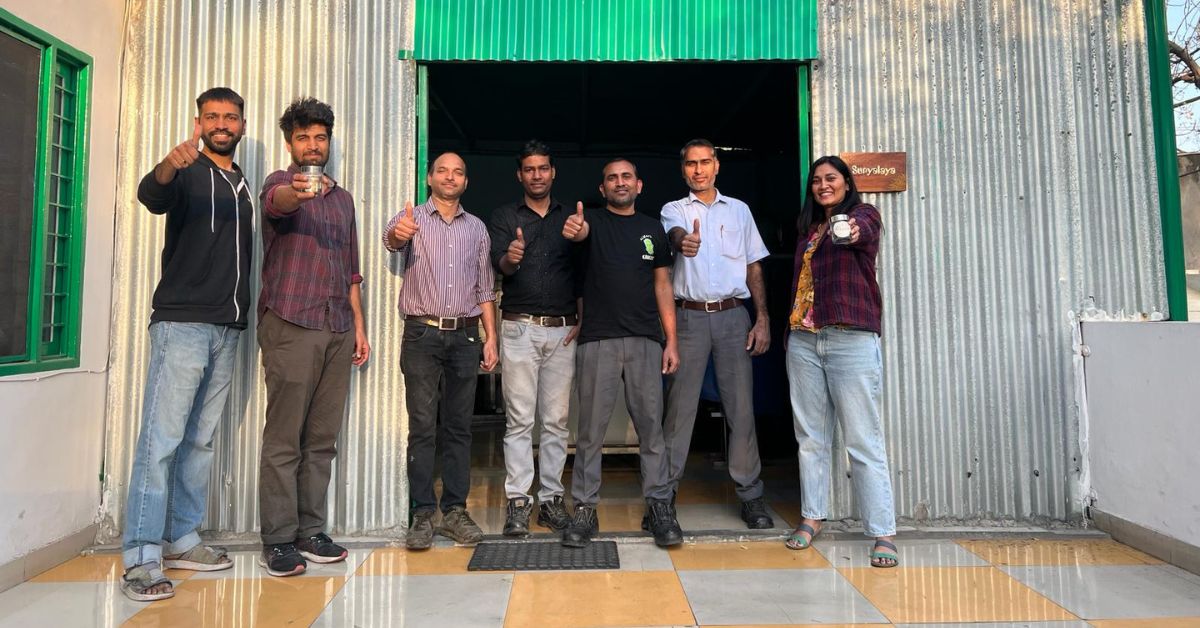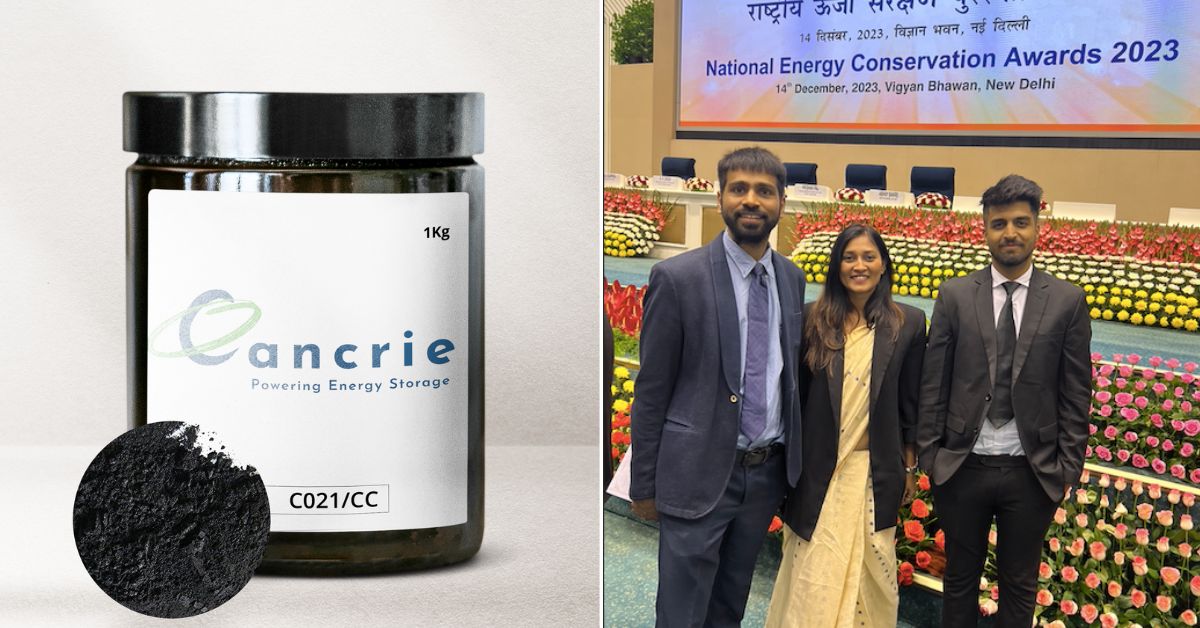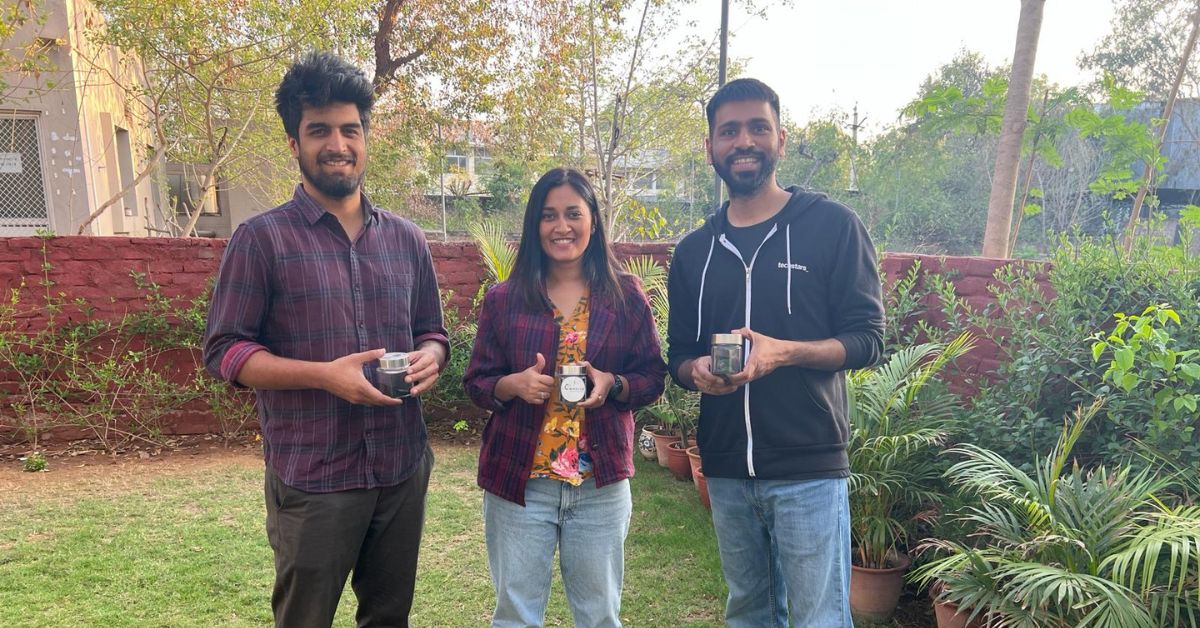[ad_1]
Jaipur-based startup Cancrie, co-founded by Akshay Jain and Mahi Singh, is making nanocarbon for batteries from coconut shells. The couple shares how their patented know-how is constructing higher power storage options for a sustainable world.
With rising gas costs and the promise to ship a inexperienced various to conventional combustion engines, the digital automobiles (EV) market has already exploded in India in recent times. Nevertheless, the notion of sustainability on account of the environmental influence of producing batteries and the power supply to energy these batteries continues to be uncertain.
“As EVs and Renewable power sources develop into extra widespread, there’s a rising demand for power storage. This implies extra batteries are wanted, which ends up in elevated mining for supplies. This places additional pressure on the planet as we extract extra sources for battery manufacturing,” Akshay Jain, co-founder of Cancrie, tells The Higher India.
To search out an optimum answer, Akshay (36) alongside along with his co-founder Mahi Singh (35) innovated nanocarbon for batteries from coconut shells. The patented know-how is claimed to extend battery efficiency by 125 %, thus decreasing the necessity for uncooked materials extraction for battery manufacturing.
“We’re utilizing waste to make nanocarbons, and by including it as a element into the present batteries, we’re rising their efficiencies. This reduces the necessity for mining of uncommon earth metals and makes the planet extra sustainable,” he provides.

Akshay and Mahi grew up collectively learning in the identical college in Jaipur. In 2010, Akshay went on to pursue PhD in chemical engineering on the Nationwide College of Singapore. Two years later, Mahi additionally went to Singapore to pursue her grasp’s at Nanyang Technological College.
It was throughout the identical time that they began brainstorming about this know-how.
“Throughout this era, we tried to upcycle agricultural waste into fertilisers, low-cost fuels, and absorbents. After a yr and a half of analysis, we achieved a significant breakthrough by turning agri-waste into high-value nanocarbon to be used in batteries. That marked a turning level for our mission,” says Akshay.
Mahi factors out that “extra individuals are adopting EVs, alongside a rising curiosity in adopting renewable photo voltaic power, each of which depend on batteries. By talking to varied folks, we understood that present batteries, that are made with carbons derived from fossil fuels, face challenges associated to lifespan, charging, guarantee returns, and security. We noticed this as an enormous plug-in for our innovation.”
Akshay and Mahi determined to marry each issues of rising agricultural waste and rising demand for batteries, and kill two birds with the identical stone! In 2020, Akshay and Mahi launched their startup ‘Cancrie’ to commercialise their patented innovation.

Initially, they used 15 totally different sorts of waste — together with coconut shells, coconut husks, fruit stones, paper waste, palm kernel shells, and human hair waste — to upcycle them into helpful nanocarbons.
“However from a enterprise perspective, we discovered coconut shells as the appropriate precursor due to their industrial feasibility and their broad availability and abundance. These precursors possess sure properties like excessive carbon content material, hardness ranges, and ash content material, which makes it a better option,” says Akshay.
After the thermal therapy of agricultural waste, the startup extracts black-coloured powder, often known as nanocarbon. In comparison with present incumbent options utilized in batteries, it’s claimed to have a greater floor space, pore community, floor wettability, and functionalities — this enhances the electrochemical reactions on electrode plates at a molecular degree in batteries.
Enhancing battery effectivity and lifespan
After safely conducting the BIS normal testing for batteries utilizing their nanocarbon at an industrial scale, the startup commercialised their product to main battery producers within the nation. Mahi informs that at the least 3,500 batteries with Cancrie nanocarbon have made it to the home market in Delhi, and Navi Mumbai and Pune in Maharashtra.

Apparently, these nanocarbons have proved to extend power density for lithium-ion hybrid batteries by 125 %. Explaining in easy phrases, Akshay says, “With this, any two-wheeler consumer can run the identical car for 225 kilometres as a substitute of 100 kilometres as a result of the vary has gone up. If any person is driving their two-wheelers on the velocity of 40 to 50 kilometres per hour, with ours, they’ll run it at a a lot better velocity of 60 to 70 kilometres per hour.”
“We now have different benefits for the lead acid batteries like family traders the place our nanocarbon has proved to enhance the life cycle of the battery. When such batteries are charged, a major quantity of electrical energy is misplaced in warmth dissipation. Our materials causes lesser inner resistance thereby storing a majority of the power within the type of chemical power. This interprets into quicker charging and enhancing the life cycle of batteries that use our nanocarbon,” he provides.
Cancrie has noticed larger capability retention thereby showcasing larger life that may go as much as 50 %, thereby minimising the losses as a result of guarantee returns.

Kiran Chinchane, proprietor of Mumbai-based Laurus Batteries, has been utilizing nanocarbon within the manufacturing of their lead-acid batteries for the previous yr and a half. He tells The Higher India, “After incorporating their nanocarbon into our lead-acid batteries, we now have efficiently prolonged the lifecycle of our batteries by 20 to 25 %. Laboratory exams point out a discount in guarantee returns as nicely. At the moment, we now have changed 20 % of our batteries with their nanocarbon element, and I goal to combine it into all our batteries sooner or later.”
In the meantime, Amitej, head of product improvement at Cancrie, tells The Higher India, “Because the efficiency and the life cycle of the batteries have gone up, you don’t have to manufacture extra batteries than what was wanted to satisfy the rising power necessities. This will even trigger decrease CO2 and GHG (greenhouse fuel) emissions. By 2050, we might be yearly decreasing 4 Giga tonnes of CO2 emissions by merely switching the fabric.”
In 2023, Cancrie was additionally awarded the Nationwide Power Effectivity Innovation award by the Bureau of Power Effectivity, Ministry of Energy.
Personally, this journey has been extraordinarily fulfilling, shares Akshay. “After I began this work, I used to be unsure how it will end up. It requires plenty of endurance because it takes years to reap the fruits. We now have constructed nanocarbon from scratch and above all, from waste. It took us virtually 10 to 12 years earlier than we began promoting. It offers me immense contentment that we now have introduced this product to such a degree,” he provides.
(Edited by Pranita Bhat; All pictures: Mahi Singh)
[ad_2]
